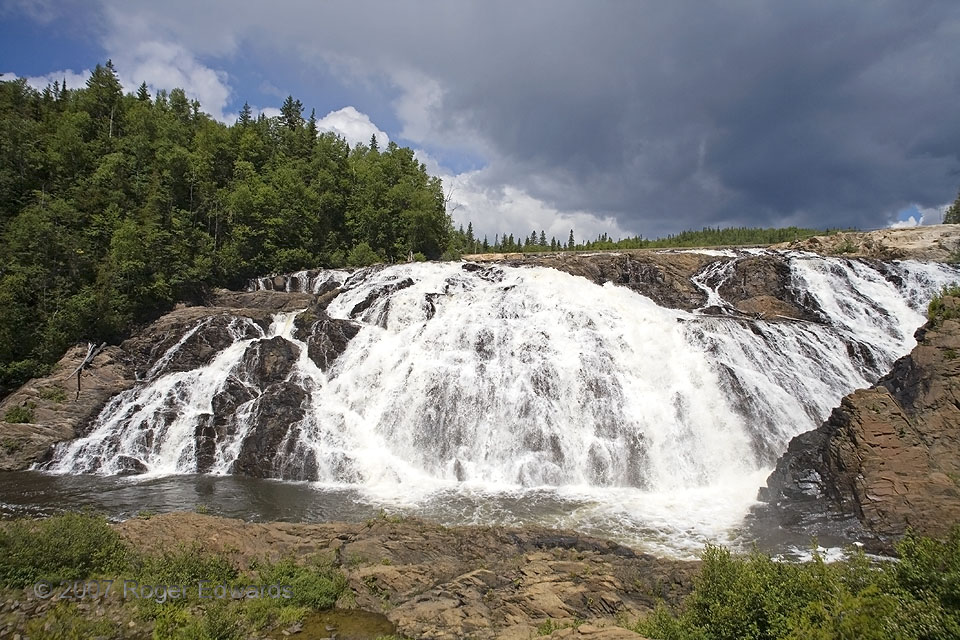Tumbling over hard, Precambrian igneous rocks, the Magpie River will take a very, very long time to erode these cascades upstream. The remaining part of Magpie High Falls, not submerged by the reservoir above it, isn’t outrageously high, with a vertical drop of about 75 feet. Still, this is one of the widest of the dozens of waterfalls that adjoin Lake Superior. As on all the other streams tumbling into the lake, this one is a simple geomorphology process working to smooth the gradient between the stream’s headwaters and the Superior basin. A midcontinental rift 1.1 billion years ago first created the depression that Lake Superior occupies, also giving birth to flood basalts and other igneous rock, like that here. Glaciers in much more recent ice ages scooped enough accumulated sediment out of the basin to shape today’s version of the lake. That’s the level to which the modern streams are trying to cut in their course downhill.
1 N Michipicoten ON, Canada (15 Jul 7) Looking NNW
47.9595, -84.8282
